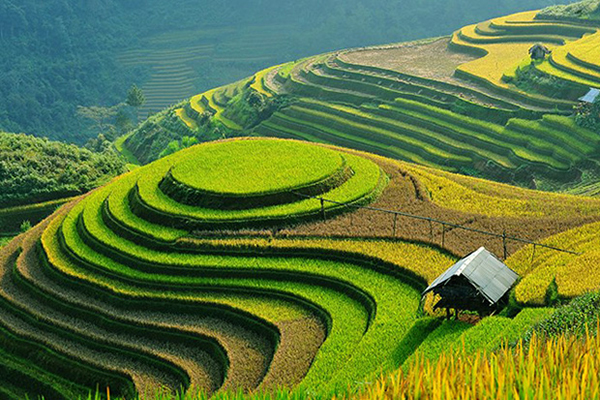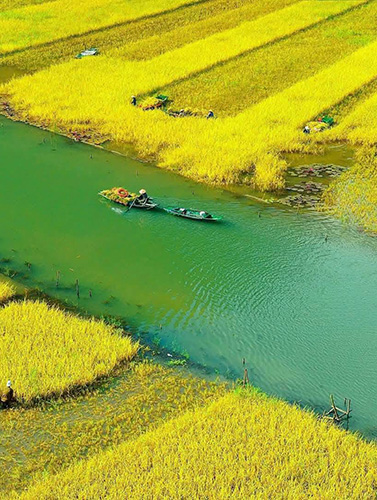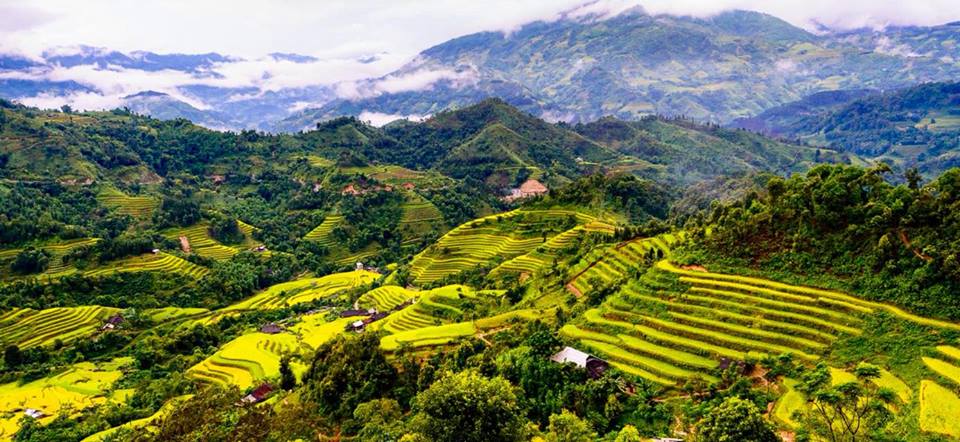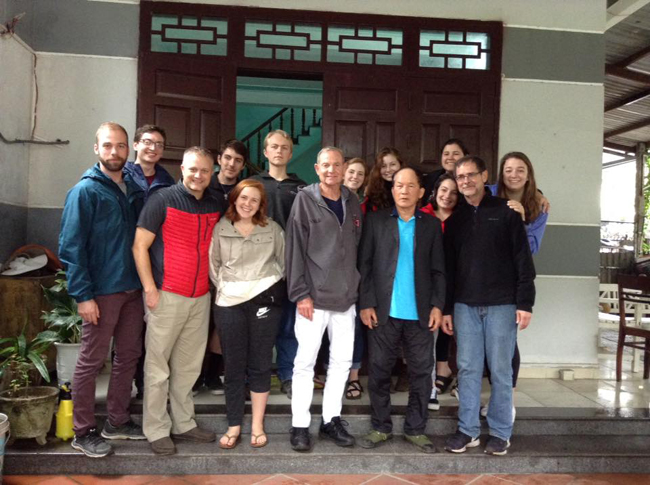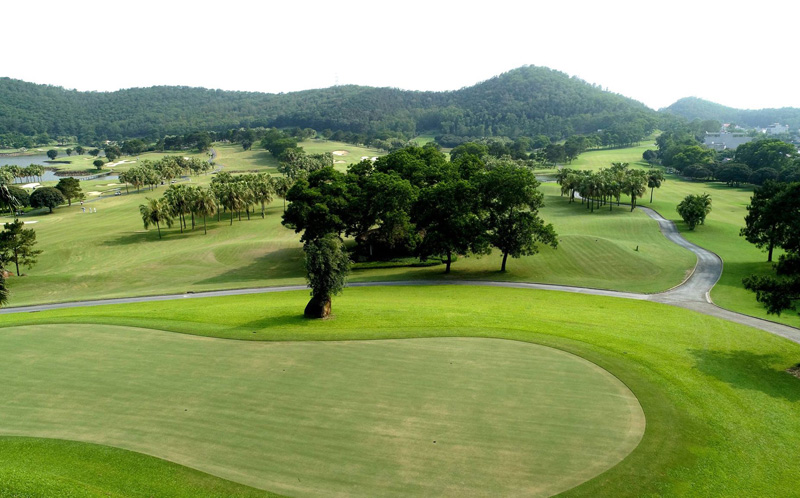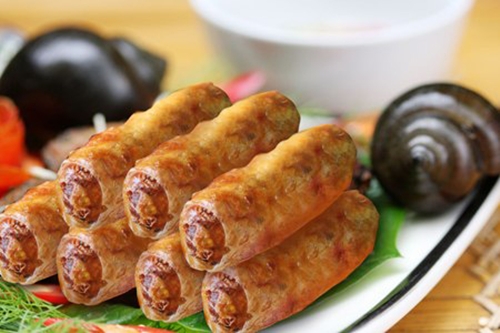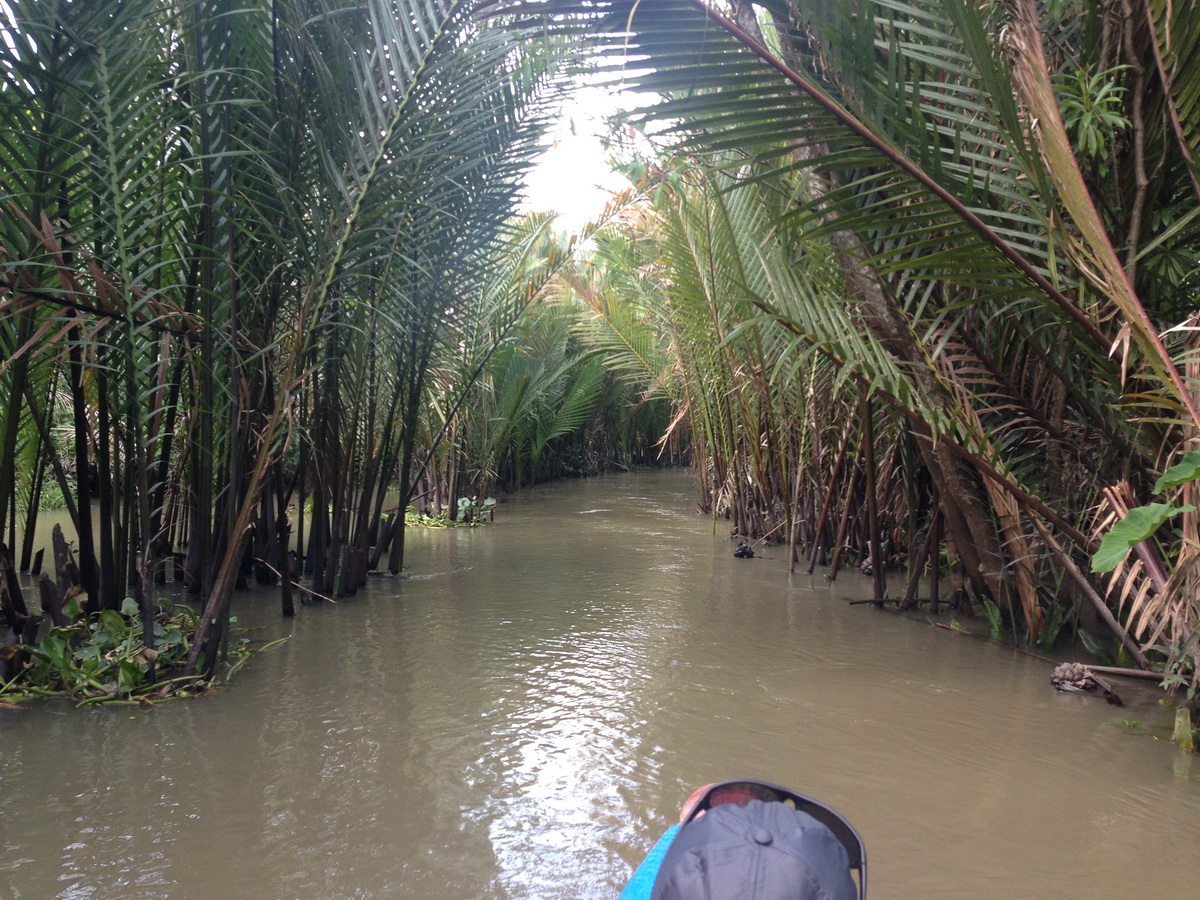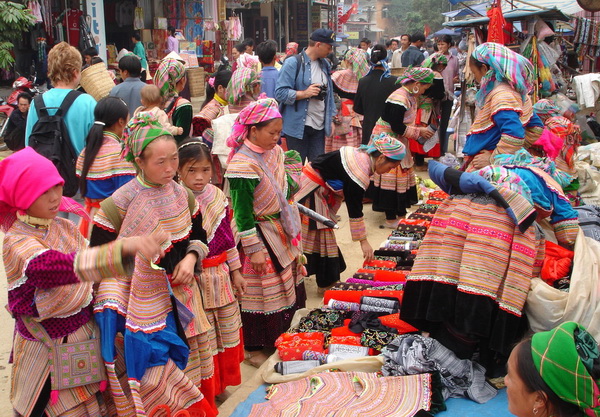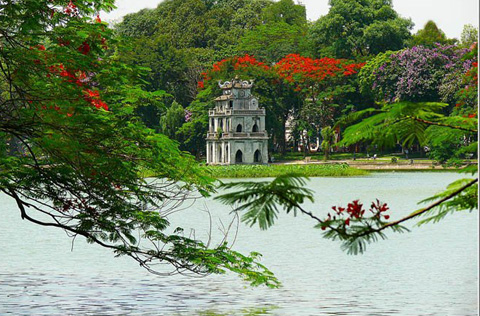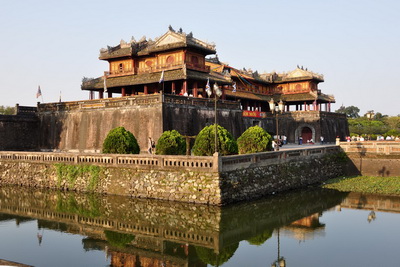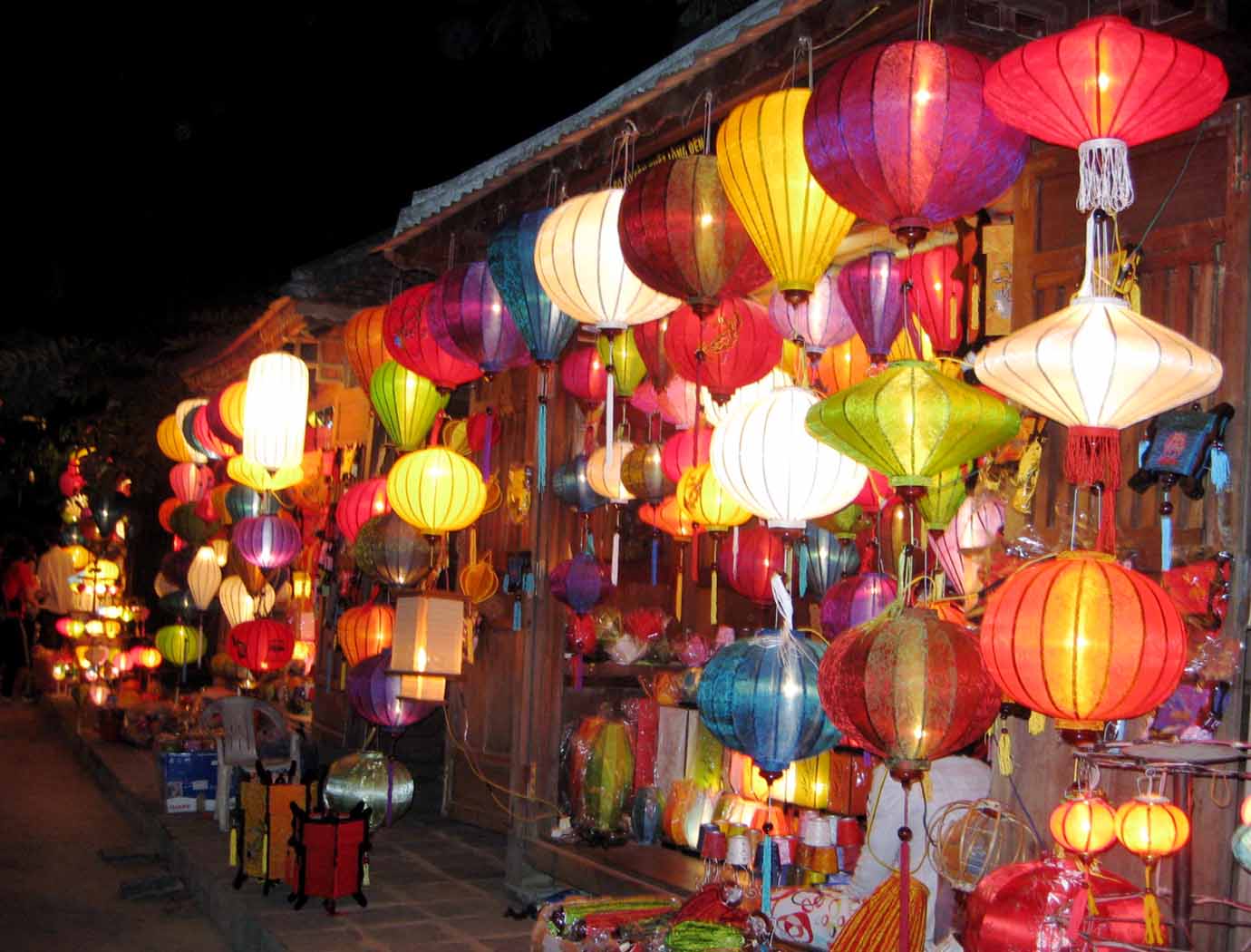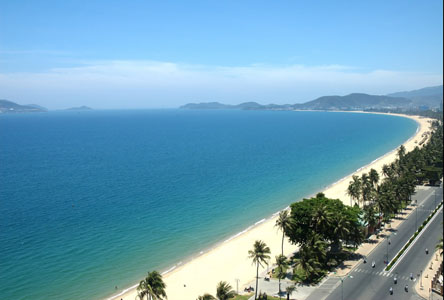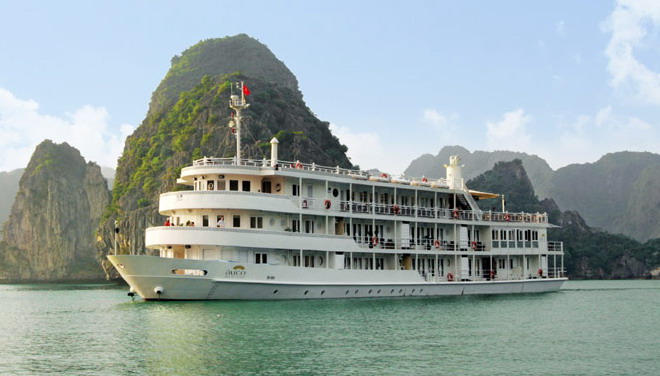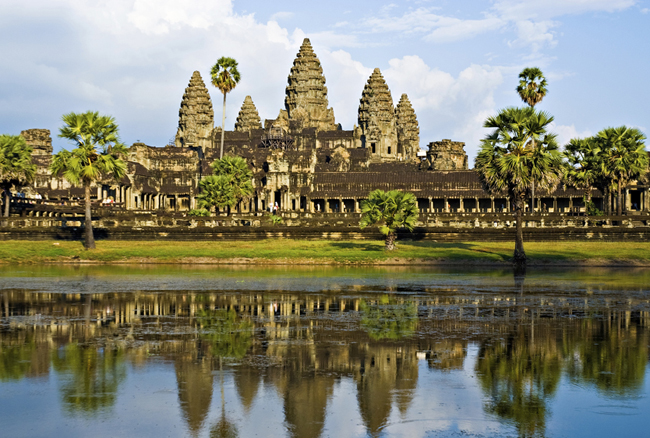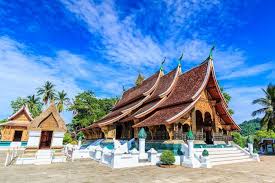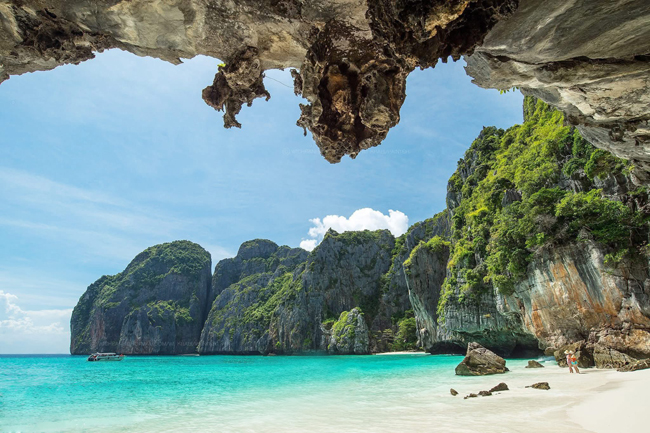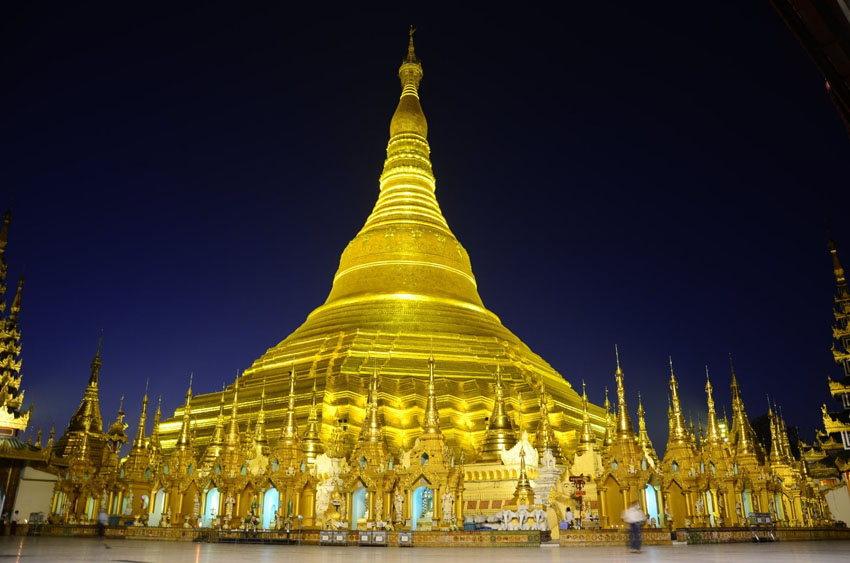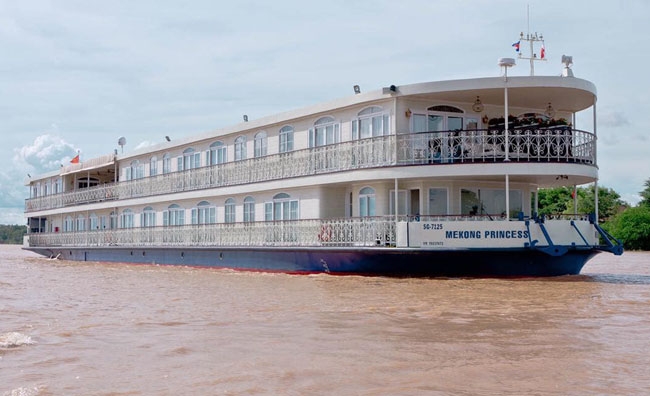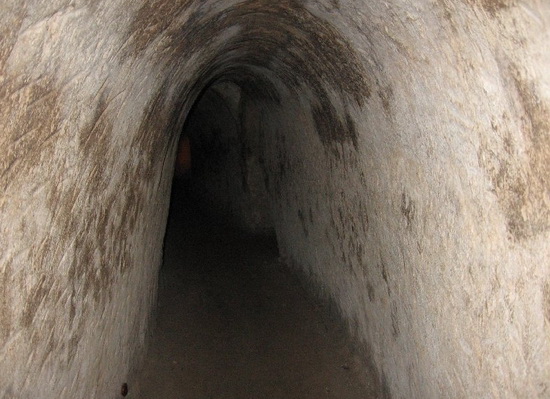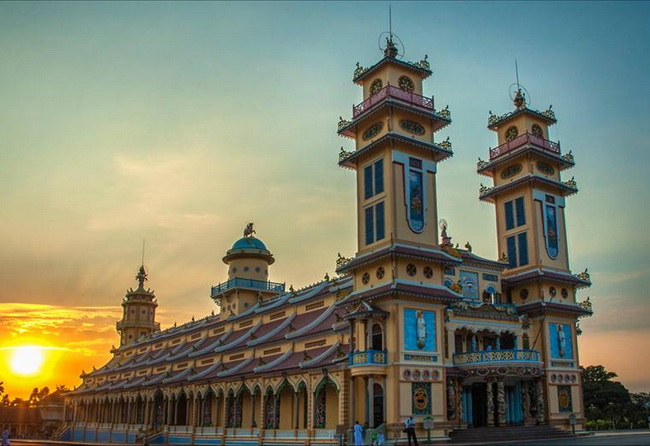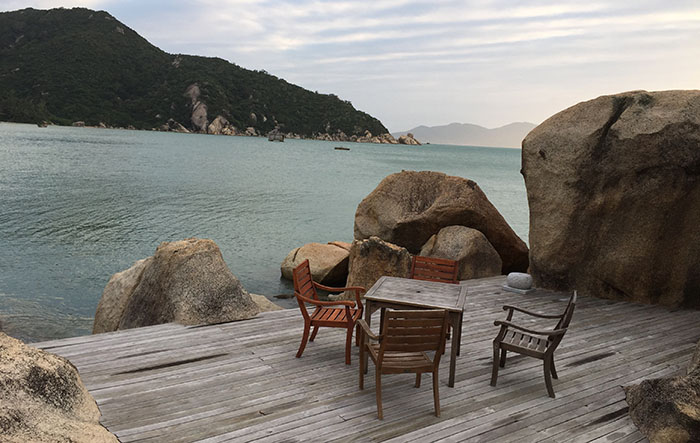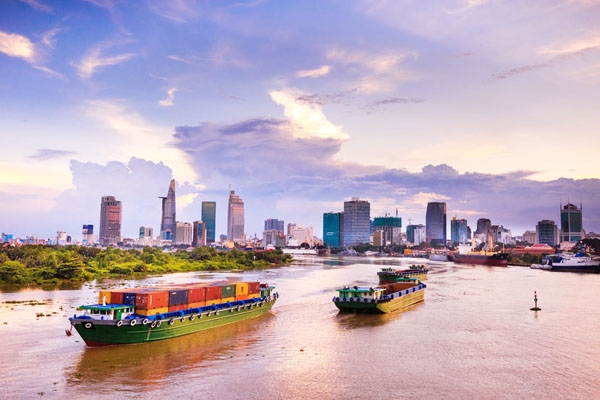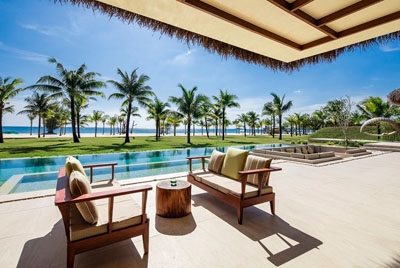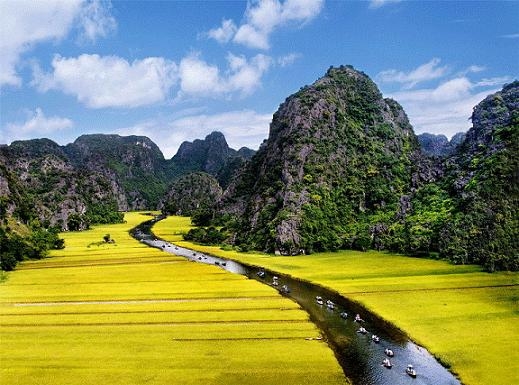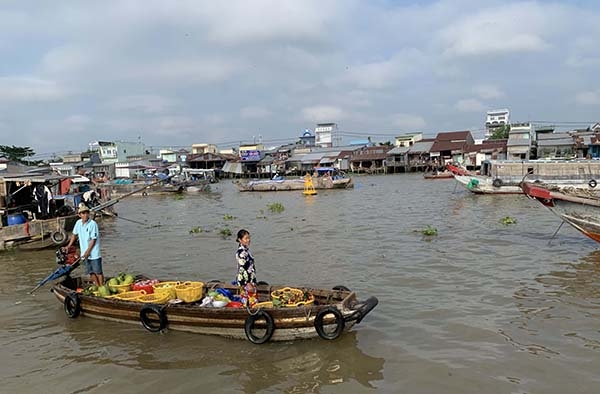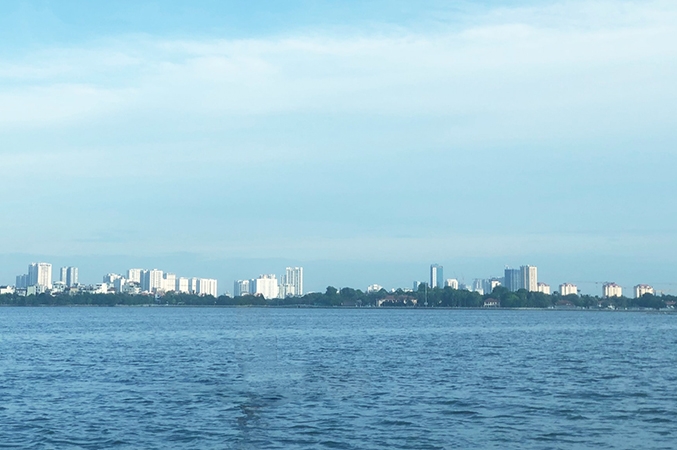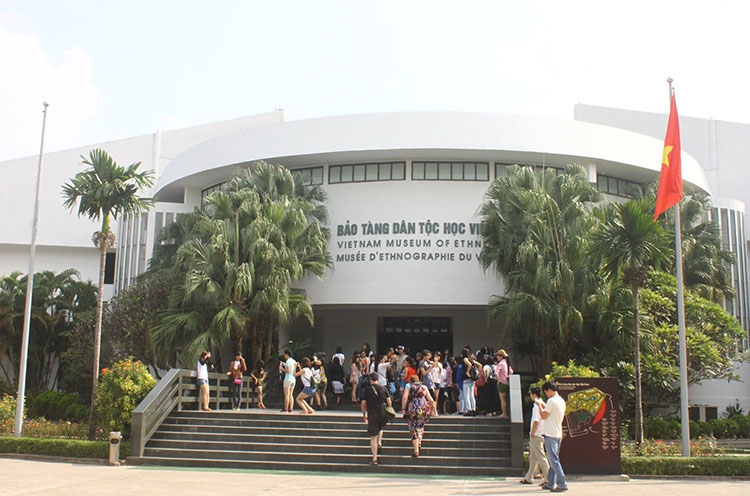Cu Chi Tunnels
Cu Chi Tunnels are an immense network of connecting tunnels located in the Cu Chi District of Ho Chi Minh City (Saigon), about 70 km to the northwest of HCMC, Cu Chi tunnel is the miniature of the creative and transformed battle of Cu Chi people and soldiers in the fierce fight, lasting for 30 years against the aggressors for independence, freedom of the country.
With its victory scale, Cu Chi tunnels went into the history of heroic struggle of the Vietnamese as a legend of the 20th century and became famous in the world. This is a unique and incomparable wonder with 250 km tunnel spreading like cobwebs underground, with the completion of works associated with the tunnels such as trenches, docks, fighting places, tunnels for eating, sleeping, meetings, activities, military, food storage, water wells, Hoang Cam stoves...
The real achievements of the tunnels were beyond human imagination. Just going under a tunnel section, you will understand why the small Vietnam could gain victory over the enemy, a big country and the world's richest. Why Cu Chi, the poor land was able to cope uninterruptedly for 21 years with a much larger army, warlike, equipped with modern and updated weapons and means of warfare. In this battle, Cu Chi people and soldiers had gained resounding victory.
Based .on the tunnel system, fortifications, trenches, Cu Chi people and soldiers had fought very bravely, gained miraculous achievements. The US military, for the first time entering Cu Chi had encountered such fierce resistance from the tunnel in important bases that they had to exclaim: “Underground Village ", "Dangerous confidential zone" ...
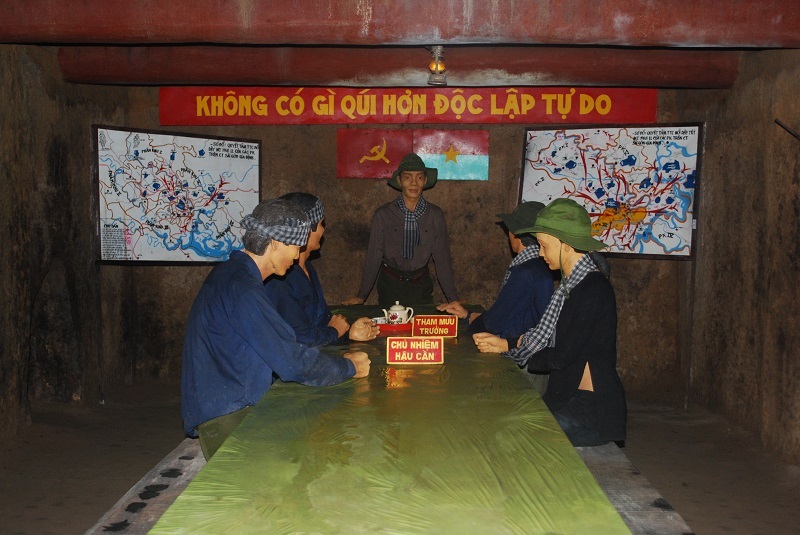
Meeting room of the Command Ministry Sai Gon – Cho Lon – Gia Dinh military zone
UNDERGROUND VILLAGE OF CU CHI
Origin of the tunnel
During these years of fighting against the French (1945-1954), the soldiers hid under the secret bunker in enemy territory, protected by the people. The tunnel secretly constructed in many ways, but mainly underground, .only .one cover large enough to get in and out, and a vent to breathe. When the cover was closed, it was difficult for the enemy to detect the bunker.
In enemy territory, the soldier stayed in the secret underground bunker in daytime, in the night, he got out of the ground for operation.
But the disadvantage of the secret bunker was that upon being detected, it was easily controlled or killed by the enemy as they were more crowded with more advantages. Due to that, it was thought necessary to extend the secret bunker into the tunnels and .onto the ground with many secret doors to both shelter and fight against the enemy, and when necessary, to escape the danger to anywhere else.
Since then, the tunnel was born with the special significance in combat operations, working for the soldiers and people in the outskirts of Saigon - Cho Lon - Gia Dinh.
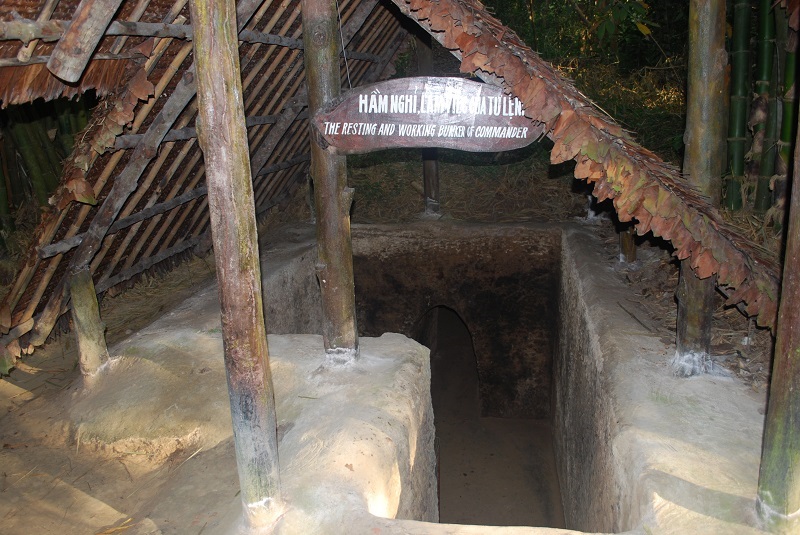
Working, resting tunnel of the Commander
In Cu Chi, the earliest tunnel appeared in 1948 in two communes of Tan Phu Trung and Phuoc Vinh An. At first, there were .only short and simple structured sections, used to conceal documents, weapons, hiding soldier’s opearting in enemy territory. Later, it spread to the communes. From 1961 to 1965 the guerrilla war of the people in Cu Chi had grown rapidly, causing huge losses to the enemy, contributing to defedt the strategic "special war" of the American. Six communes in the north of Cu Chi had completed the "backbone" tunnel. Then, the agencies and units developped branch tunnels connecting with the "backbone", an interconnected tunnel system.
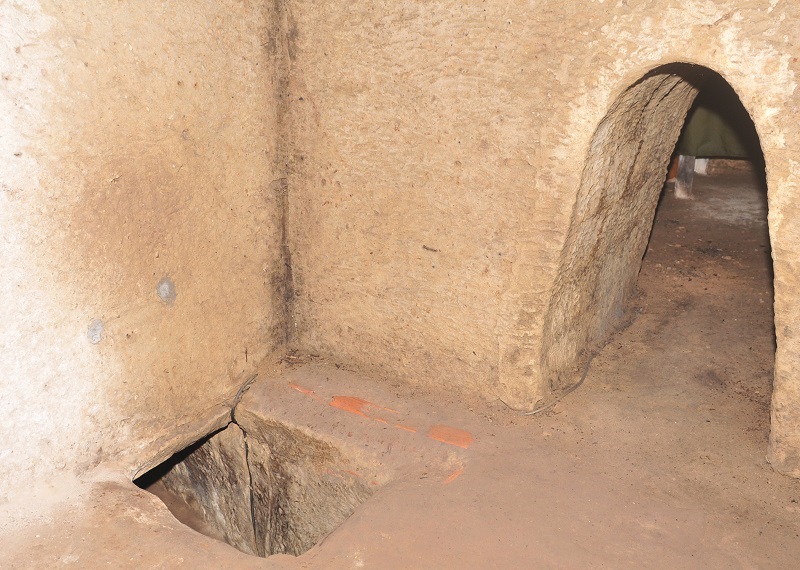
Way to second floor
Entering the era of figting against American imperialism in Vietnam, Cu Chi Tunnel thrived widely, especially in the beginning of 1966, when the US used infantry Division No. 1 " Red Brother " and performed major operations named crimp, sweeping, raiding bases, and the next, putting Division 25 "tropical lightning" to establish Dong Du basement, consecutive sweeps, fiercely attacking the revolutionary forces here.
Before the fierce attack of the America - puppet with barbaric destruction war, Commissioner Saigon - Cho Lon - Gia Dinh area, Cu Chi District’s Party Committee led the people and the armed forces determined to manage to fight, destroy enemy defense and homeland security, protecting the revolutionary base areas of strategic importance, the approach and process for major attack to Saigon puppet’s headoffice. With the slogan "not an inch away, not a glass leave," the army, militia, political parties and civil authorities and the people tried to emulate digging tunnels, trenches, fortifications around the clock, regardless of any bombs, rain or sun, actively building "hamlet fight" to set "kill Americans belt" firmly into the defence, the attrition process, destroy enemies.
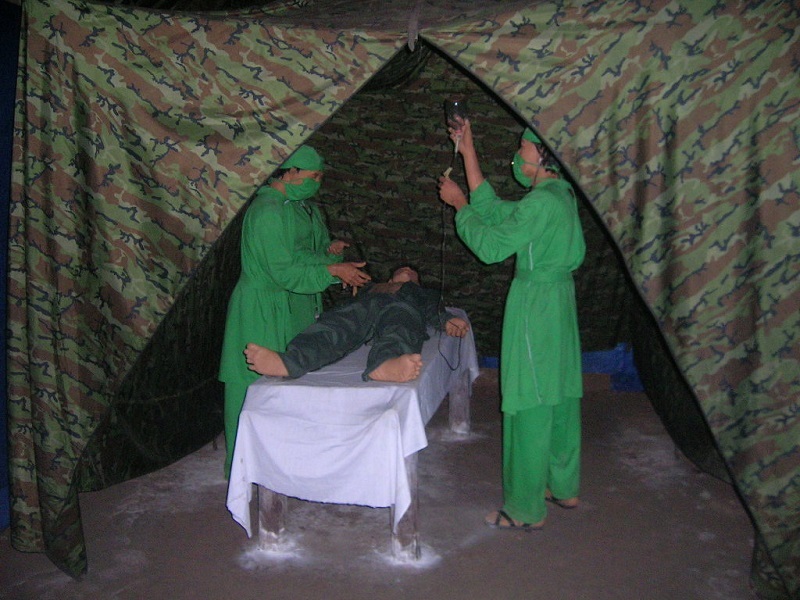
Surgery Bunker
The movement of digginh tunnels increasingly thrived, stayed strong everywhere, the old and the young, boys and girls participated with excitement to establish fighting tunnel. The strength of the human will was able to any difficulties. .only by means of very primitive tools: hoe blade and the bamboo “ki”, Cu Chi soldiers and people have made a great work with hundreds of kilometers along the horizontal tunnel in the ground, connecting the hamlet together as a madic "village". .only the transfer of tens of thousands of cubic meters of soil to somewhere else to keep secret, was something extremely arduous and meticulous. Someone asked where to hide such a large land mass? The answer is that there are many ways: pump into bomb holes, submerged up into termite mounds, shed plowed fields, grow plants .on the ground ... .only a time to lose the trace. All the family in "belt" the area dug trenches connecting into the tunnels, creating continuous production to fight and to keep the village. Each individual is a soldier; a tunnel is a fortress fight.
Exactly .one year after the Crimp raid, dated January 08th, 1967, the US military launched the Cedar Falls military operation in "iron triangle" area, aimed at destroying bases and destroying the revolutionary forces. This time, the tunnel system had reached the total length of about 250 km. Cu Chi Tunnel was not passive but proactive to fight in the battle with landmines left thick .on the ground, to become a daily threat to the enemy during the war.
Tunnel structure
The tunnel system runs squirming in the ground, from the "backbone" (Main Street) spreading numerous branches of diferent lengths, connecting together or independently end, depending .on the terrain. There are many branches to Saigon River, so in emergency case, they could cross the river to the base of Ben Cat (Binh Duong).
The tunnel is not too deep but is able to against heavy artillery and tanks, armored vehicles, deep combat sections and small bombs. There are structural sections from two to three floors (upstairs called the "upper", downstairs called "low"). Place up and down between the floors; there is a secret hatch cover. In the tunnel, there are necessary stop points to prevent the enemy or toxic chemicals sprayed by the enemy. There are narrow passages, pretty small to go through. Along the tunnel, there are vents discreetly disguised and carved up the ground with many secret doors. Countless doors are structured as combat, sniper gun emplacements very flexibly. This is the sudden t the enemy. Under the single tunnel in important coverage areas, there are jaws, nail holes, pitfalls...
Around the covers of the bunkers, there are many nail holes, mine left (called dead area), including anti-tank landmines and cluster bombs against wheels helicopter shooting down, to destroy and prevent military enemy approaching.
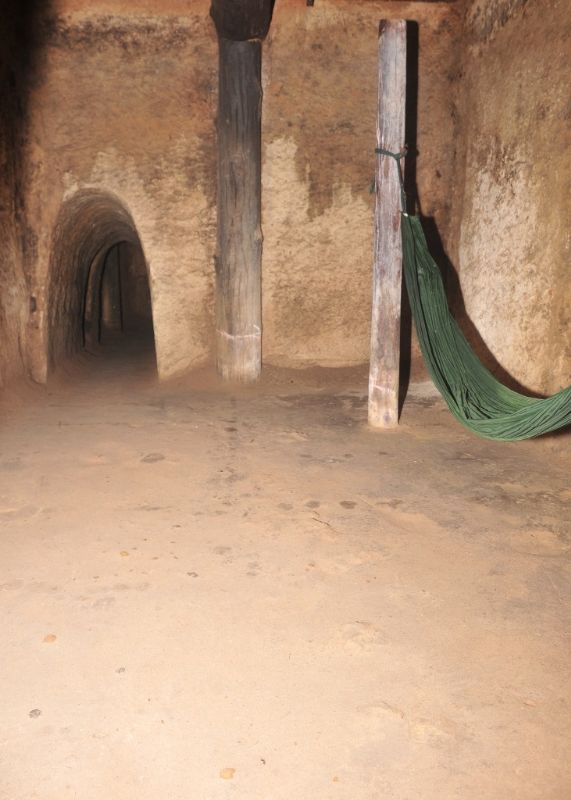
Rest bunker
Along with the tunnel, there are bunkers large enough for hammocks to rest after the fight. There are also weapons and food storage area, drinking water, water wells, Hoang Cam stove (stove hid smoke in the ground), work bunker of the leaders, commanders, surgery bunker, nurturing wounded, A solid basement for women, the elderly, children's shelter. There are large cellar, cool roofs, above camouflaged for meetings, film screenings, music performances...
At the time of fierce raiding, all activities of combat forces and activities of the people are "hidden" underground. In arduous conditions, peple were still trying to create a normal life, despite the ground plowed relentlessly bombing, smoke and fire ... but in reality, life in the tunnels was extremely arduous, the story of unwilling .
Due to conservation of forces to fight in long time, people had to accept all the rigors beyond human endurance. As in the dark, cramped underground, the travel was very difficult, mostly bending or crawling away. Tunnel was wet and stuffy due to lack of oxygen, light (light mainly from candle or flashlight). Whenever a person became fainting, it was necessaty to get out for CPR to regain consciousness. In the rainy season, the ground had more harmful insects, even snakes many where... For women, life was even more difficult. To have a baby and raise the children in the basement tunnels was to suffer so much misery.
Not .only this, hundreds of people up and down the tunnel every day to keep secret tunnels was a very complicated story. A broken grass, soiled land, a torn leaf unusually needed remodeling, otherwise, the enemy could detect and attack.
WAR FROM THE HEART OF THE LAND
Right from the beginning, when the US invaders entered Cu Chi, they had faced fierce resistance of the soldiers and the people here. They were damaged .on the people and war vehicles in the raid to liberated areas. After the suddens, they realized the fighting force coming from under the tunnel, and determined to destroy the tunnel system. Combined with tunnel destruction, destroy the bases to knock away the revolutionary forces, creating a safety belt to protect Saigon headquarters of American - Puppet, also the capital of the puppet government "Republic of Vietnam".
During a long time, they constantly attacked the raiding bases and tunnel system. Mainly by the following tricks:
1. Use water to destroy the tunnel: In an operation called Crimp (trap), from January 08th to 19th, 1966, the US mobilized 12,000 troops combined with the air force, tanks, newspaper infantry to attack liberated areas north of Cu Chi. The enemy used water pumps into the tunnel, thought that the enemy would be overwhelmed to emerge ground water. When detected hatch in remote places of Saigon River, they used a helicopter hoisting each sitet water to flush into the tunnel. With childish tricks, the enemy could not achieve success as their intention. They could not afford to make the tunnels flooded with too little water, just enough for infiltration into the soil. According to the enemy, they just destroyed 70m tunnel, some too small compared to the tunnel system with hundreds of kilometers. In contrast, during the raid, US forces were hit by soldiers, guerrilla from all sides, day and night, causing 1,600 casualties name, 77 tanks and armored vehicles destroyed, 84 aircraft were shot down. This was a great loss for US forces in military operations "trap". It proves that people's guerrilla war was likely to defeat American modern warfare.
Despite the defeat, the enemy continued to attempt to destroy the tunnels. They gave some military experts to directly investigate Cu Chi Tunnel system, but not guaranteed conditions for a thorough investigation, plus the subjective mind, relying .on modern weapons, this brought no results; the next tricks, .once by bine went bankrupt and they got more and more severe loss.
2. Use the “rat” army to attack the tunnel: Cedar Falls In operation, known as "Shelling earth" opening from January 08th, 1967, the enemy mobilized 30,000 troops backed up with tanks, Coins armor, artillery, air force, attacking fiercely into the "iron Triangle", in which they destroyed towns of Ben Suc (Ben Cat) and severely undermined 6 communes to the north of Cu Chi district underlain in the dense tunnel network.
To perform this big operation, the enemy had the ambition to destroy Command Military Zone of Saigon - Cho Lon - Gia Dinh, the leading body of District Commissioner, destroying the main unit of the Military Zone, destroy the bases and tunnel system, getting the people away, turning the area into a "free zone of destruction". In fact, the American - the puppet did casualties 1000 people, collecting 15,000 other people in the "strategic hamlets", burning, breaking 6000 house, stealing 5700 tonnes of rice ...
During the raid, the enemy armies using "rat" of 600 infantry soldiers selected the name "little people" in charge of destroying tunnels.
Before opening sweeps, they used "Flying Fortress" B.52 and jets bombs combined with continuous artillery strikes for months, in order to "clear grounds" for landing helicopters and tanks, infantry attack .on the base. They used the napalm which burned hundreds of hectares of forest and gardens. Bulldozers cleaned the woods and put the tree back, pouring the gasoline to burn.
There were 4 "rats" each group, two .on the ground, 2 crawling into the tunnels (which they discovered as the soldiesr had moved to another location) equipped with gas masks, rifles, fast, dagger, oblong iron plant, blowers Sliding Agent, flashlight .... Meet the tunnel junction; they put mine there, putting the wire .onto the ground and "firing" for mine explosion blowing the tunnel.
By this method, the enemy destroyed some short tunnels, but nothing compared to the hundreds of km tunnel interlaced many sections, many corners interconnected with each other.
Infantry tactics used to destroy tunnels fails.
During this raid, the fighting forces and people managed to stay and fight back fiercely, defend the Command, the leaders of the District Commissioner and the majority of the base. Anywhere the enemy wnet, the soldiers from the mounds and trenches fought them in every form, every weapon. At the junction of Ben Duoc (now ruined), .only .one team with nine guerrilla fighters, including .one nurse, had to stay continuously for several days, killing 107 enemy soldiers, shooting their tanks.
Cedar Falls Operation suffered heavy losses double than the Crimp raid and must end sooner than expected (to take .only 19 days). These "cast mines" by Hero To Van Duc were used throughout the battlefield, contributing to destroy hundreds of motor vehicles and helicopters, infantry America, repel evil footsteps of the enemy .
For the Cedar Falls, the enemy lost 3500 people, 130 tanks, armored vehicles, 28 aircrafts. The goal of the US was not achieved, as General A. Nasen confessed partly: "The survey said rights after our troops have withdrawn from the" iron triangle ", the Vietnamese Communists broke into first". After all, the US must admit bitterly: "... cannot destroy the tunnels because it is not .only very deep, but alos extremely winded, not straight anywhere... inefficient to use sappers ... and very hard to find the hatch to down the tunnel ... ".
3. Use Becgie dogs raiding the tunnels: In the raid, US forces used guided hunting dog Becgie to detect tunnels. Approximately 3,000 children are mobilized into action Cu, Ben Cat. This breed of West Germany, sniffing the very best and trained "professional" before going to Vietnam.
Using military dog tricks made it difficult and dangerous for the guerrilla army, because the rising steam vents and hatch were easy to find by dogs. At first, guerrillas shot dead dog, as the enemy detection, focused raiding. Later, the soldiers puree mixed with dried chili pepper powder sprinkled .on the vents, but not okay for dogs inhaling pepper coughing caused the enemy to detect tunnels. The work quickly became complex. The units encouraged people to make suggestions to fight against the dogs, finally figured out how to disable the large army dog, the risks and benefits. According to the announcement, in the campaign using dogs in Cu Chi Tunnel, 300 dogs were sick and killed by guerrillas. Thus Becgie dog tricks used to detect the tunnels of the US military went into failure.
4. Use motor vehicle to destroy the tunnels: This was an extremely fierce trick, they mobilized hundreds of tanks and motor vehicles horsepower contact tunnels cut pieces. Anywhere they came, they bkew toxic chemicals into the basement, while using loudspeakers to call for soldiesr. In some rare cases, they exposed the secret bunker .onto the ground without knowing people inside the shelter. At night, the soldiers in the tunnel secretly escaped...
In these days, despite the US military collaboration with the army .onslaught, the revolutionary forces still remained in the tunnel, living and fighting, destroyed much of the enemy’s sources.
Not achieve the desired results, the enemy had to abandon this strategy, because they could not afford to destroy out all the tunnels while the troops and guerrillas were fighting back all day and night.
5. Sowing grass for terrain clearance: The enemy also used many tricks to destroy the tunnels and bases, but notably is the trick of sowing grass terrain clearance.
They used aircraft spraying a strange species, Cu Chi people knew as the "American grass". This grass grew very fast, just a month achieved high as 2-3 meters, sharp and as bis as the chopstick. The other plants are overwhelmed and could not develop. The grass in the forest made it difficult to travel, combat maneuver, but easy to detect targets from enemy aircraft, to bombardment.
By the dry season, US grass became yellow and dry like straw. Aircraft launchers or bombers, artillery made vivid forest burning, left soil inert, the minefield of guerrillas exploded, burning tunnel... The unit, the agency had no terrain to refuge, left footprints in the ash layer. The enemy tracked to basement door. However, the break trick of sowing grass had the same fate with the tricks mentioned above. Because immortality blue of farms still went ahead, covering the bases. The revolutionary forces still remained in Cu Chi. And from the tunnel system, the soldiers and the people attacked the enemy's lair in Saigon in the spring of 1968, conquered most of the key objectives of the United States - the puppet as Independence Palace , US Embassy, radio, General Staff, Commander Navy camouflage, Tan Son Nhat airport ...
After the offense and uprising in Tet Mau Than, morphology of the battlefield had changed. The enemy out strategy "sweep and hold", open continuous operations, fiercely counter-attacked and swept Cu Chi’s liberated areas, in order to dislodge the revolutionary forces away, creating safety belts to protect Sai Gon. The tunnel was also trying to create and develop firmly for the forces to approach suburban areas, hold the area, ball up new opportunities to prepare for the liberation of Saigon later.
Until the spring of 1975, several large military groups of Corps 3 and army units, locals gathered here toenter liberate town of Cu Chi and last stronghold of the enemy in Saigon, ending the war against the US, at 11 am .on April 30th, 1975.
WAR AND LOSS
By the Civil War's extremely various and innovative, over twenty years of fighting tenacity, people and soldiers of Cu Chi hit 4269 small and big attacks, collected 8581 firearms, defeated more than 22,582 enemies (more than 10,000 Americans, 710 arrested), destroyed more than 5168military vehicles (mostly tanks and armored vehicles); shot down and beaten down 256 aircraft (mainly helicopters), sinked 22 ships and boats, and destroyed 270 military posts.
Being titled by the National Liberation Front of South Vietnam: CU CHI LAND OF STEEL AND COPPER WALL.
Being honored twice by the Government of the Socialist Republic of Vietnam with the title: HERO OF THE PEOPLE'S ARMED FORCES.
Up to now, Cu Chi district is honored: 19 Hero communes, 39 People's Armed Forces Hero, 1277 Vietnamese Heroic Mother, 1800 appointed as valiant, awarded two City Council Medals and more than 500 national and Military Medal, Victory of different grades for the collectives and individuals.
To gain the glory achievement, Cu has suffered great sacrifice: In preliminary statistics, the district has suffered: 50 454 attacks; 10,101 civilians had been killed; 10,000 officers and soldiers who died for the liberation of their homeland; hburned 28,421 roof; 20,000 hectares of fields and deforested ...
The war has left serious consequences for Cu Chi, especially the tragic loss of life and poverty in the years after the liberation.
Today, the "white zone" has revived intensely. .on the Tunnel now is the green fields and crowded villages. The sworks for livelihoods are growing round the wounds of war.
Cu Chi is innovativing and going to socialism, with strong agricultural structure, .one of th ekey rice and food regions of Ho Chi Minh City, also the solid military fortress to protect the city in the north-western gateway.
CU CHI TUNNEL: TRADITIONAL DESTINATION OF GENERATION AND RESPECT OF FRIENDS ALL OVER THE WORLD
With the value and victory scale gained with bloodshed, efforts of thousands of soldiers, people, the basement of Cu Chi tunnel was recognized by Ministry of Culture as the National Culture- History Monument.
Cu Chi Tunnel quickly attracts the attention of everyone.Visitors in and outside the country come to visit and learn more and more crowded. Cu Chi Tunnel becomes a traditional destination of Vietnam generation and respect of friends in the world.
From the day of peace, there were tens of thousands of tourist group with millions of all color, race all over the world, who came to visit Cu Chi Tunnel. From the General Secretary of the Communist Party, the Head of State, to politicians, generals, scientists, philosophers, writers, journalists, Veterans ... had entered the tunnel with all emotion and admiration for the heroic land. A politician in the German Federal Republic said: "For many years I have suspected the struggle of the people of Vietnam. How can a small and poor country defeat a large and wealthy country like the United States? But coming here, go through the 70 meter tunnel, I was self-answering that question. "
Currently, Cu Chi Tunnel is conserved in two locations:
- Ben Duoc Tunnel (Committee Area basement, Command Ministry of Saigon - Cho Lon - Gia Dinh Military Zone) in Phu Hiep Hamlet, Phu My Hung Commune, Cu Chi District, Ho Chi Minh City, recognized by Ministry of Culture - Information as National Historic Site under with Decision No. 54 / VHQD April 29th, 1979.
- Ben Dinh Tunnel (Cu Chi District Commissioner basement) at Ben Dinh Hamlet, Nhuan Duc Commune, Cu Chi District, Ho Chi Minh City, recognized by Ministry of Culture - Information as National Historic Site in under Decision No. 101/2004 / QD-BVHTT .on December 15th, 2004.
OTHER ACTIVITIES
Sport Defense Shooting
A thrilled sport with many visitors involved. Visitors will feel interested when testing their marksmanship in Defense Shooting playground. You can choose the appropriate type of gun used during the war, after the complete guide, you can try your shooting with animal-shaped and moving targets.
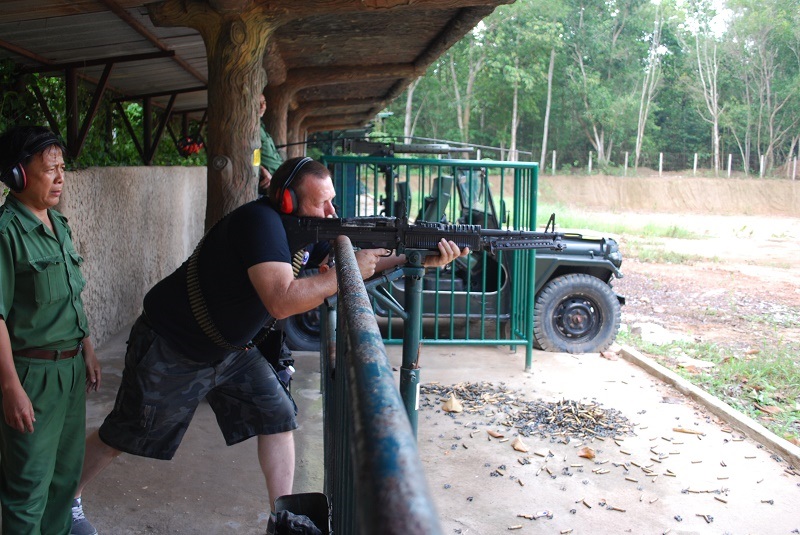
Paint shooting
This is the latest campaign game sporting nature is both military. In addition to relaxation purposes also allows players the ability to judge, team-oriented, wellness. Guests joining guests feel as soldiers are fighting really. Each visitor is equipped masks, uniforms, armor and guns AR15 or AK47 (guns at Cu Chi Tunnels modern than any other place). Games shooting bullets spray is a form of entertainment that tourists can not miss when the Cu Chi tunnels with high attractiveness and absolute safety. In addition, visitors can also try marksmanship shooting joining the military standard beer (beer fixed, mobile beer, beer hidden).
Swimming Pool
Built in the unique style close to nature, with a surface area of 150 m2 for Children Lake, 500 m2 for adult pool. Swimming pool has water filtration systems with new technologies to ensure safety. This is the completing and modern system (with dressing room, bathroom, toilet included). After hours of exciting sightseeing, guests can take a dip into the clear blue water of the pool to enjoy the fresh, cool feeling.
Swan Pedal, kayaking
Visitors can use the swan; kayaking excursions to enjoy panoramic lake simulate the East Sea. The lake also represents the islands; the islands belong to Vietnam as: Bach Long Vi Hoang Sa, Truong Sa, Con Dao, Phu Quoc ... thereby, it helps to educate love for the country, universal sovereign territorial integrity. To the edge of the lake, visitors can watch the woods and 3 characterized models of 3 minimized regions as the One Pillar Pagoda (Hanoi), Ngo Mon (Hue), Ben Nha Rong (HCMC) ...
Single, double Bicycles
This type is preferred by students, the youth. They can also ride bike tour in lakeshore of East Sea, cycling and relaxing, watching the scene natural, enjoying the cool fresh air.
Camping Picnic
Picnic area, camping by the riverside or Saigon lakeside, or next to the lake stimulating the East Sea with large campus and airy, very suitable for guests to organize outdoor activities such as group activities, games...
Tours to Cu Chi and Cao Dai Temple are alway available please contact us for best prices
The real achievements of the tunnels were beyond human imagination. Just going under a tunnel section, you will understand why the small Vietnam could gain victory over the enemy, a big country and the world's richest. Why Cu Chi, the poor land was able to cope uninterruptedly for 21 years with a much larger army, warlike, equipped with modern and updated weapons and means of warfare. In this battle, Cu Chi people and soldiers had gained resounding victory.
Based .on the tunnel system, fortifications, trenches, Cu Chi people and soldiers had fought very bravely, gained miraculous achievements. The US military, for the first time entering Cu Chi had encountered such fierce resistance from the tunnel in important bases that they had to exclaim: “Underground Village ", "Dangerous confidential zone" ...

Meeting room of the Command Ministry Sai Gon – Cho Lon – Gia Dinh military zone
UNDERGROUND VILLAGE OF CU CHI
Origin of the tunnel
During these years of fighting against the French (1945-1954), the soldiers hid under the secret bunker in enemy territory, protected by the people. The tunnel secretly constructed in many ways, but mainly underground, .only .one cover large enough to get in and out, and a vent to breathe. When the cover was closed, it was difficult for the enemy to detect the bunker.
In enemy territory, the soldier stayed in the secret underground bunker in daytime, in the night, he got out of the ground for operation.
But the disadvantage of the secret bunker was that upon being detected, it was easily controlled or killed by the enemy as they were more crowded with more advantages. Due to that, it was thought necessary to extend the secret bunker into the tunnels and .onto the ground with many secret doors to both shelter and fight against the enemy, and when necessary, to escape the danger to anywhere else.
Since then, the tunnel was born with the special significance in combat operations, working for the soldiers and people in the outskirts of Saigon - Cho Lon - Gia Dinh.

Working, resting tunnel of the Commander
In Cu Chi, the earliest tunnel appeared in 1948 in two communes of Tan Phu Trung and Phuoc Vinh An. At first, there were .only short and simple structured sections, used to conceal documents, weapons, hiding soldier’s opearting in enemy territory. Later, it spread to the communes. From 1961 to 1965 the guerrilla war of the people in Cu Chi had grown rapidly, causing huge losses to the enemy, contributing to defedt the strategic "special war" of the American. Six communes in the north of Cu Chi had completed the "backbone" tunnel. Then, the agencies and units developped branch tunnels connecting with the "backbone", an interconnected tunnel system.

Way to second floor
Entering the era of figting against American imperialism in Vietnam, Cu Chi Tunnel thrived widely, especially in the beginning of 1966, when the US used infantry Division No. 1 " Red Brother " and performed major operations named crimp, sweeping, raiding bases, and the next, putting Division 25 "tropical lightning" to establish Dong Du basement, consecutive sweeps, fiercely attacking the revolutionary forces here.
Before the fierce attack of the America - puppet with barbaric destruction war, Commissioner Saigon - Cho Lon - Gia Dinh area, Cu Chi District’s Party Committee led the people and the armed forces determined to manage to fight, destroy enemy defense and homeland security, protecting the revolutionary base areas of strategic importance, the approach and process for major attack to Saigon puppet’s headoffice. With the slogan "not an inch away, not a glass leave," the army, militia, political parties and civil authorities and the people tried to emulate digging tunnels, trenches, fortifications around the clock, regardless of any bombs, rain or sun, actively building "hamlet fight" to set "kill Americans belt" firmly into the defence, the attrition process, destroy enemies.

Surgery Bunker
The movement of digginh tunnels increasingly thrived, stayed strong everywhere, the old and the young, boys and girls participated with excitement to establish fighting tunnel. The strength of the human will was able to any difficulties. .only by means of very primitive tools: hoe blade and the bamboo “ki”, Cu Chi soldiers and people have made a great work with hundreds of kilometers along the horizontal tunnel in the ground, connecting the hamlet together as a madic "village". .only the transfer of tens of thousands of cubic meters of soil to somewhere else to keep secret, was something extremely arduous and meticulous. Someone asked where to hide such a large land mass? The answer is that there are many ways: pump into bomb holes, submerged up into termite mounds, shed plowed fields, grow plants .on the ground ... .only a time to lose the trace. All the family in "belt" the area dug trenches connecting into the tunnels, creating continuous production to fight and to keep the village. Each individual is a soldier; a tunnel is a fortress fight.
Exactly .one year after the Crimp raid, dated January 08th, 1967, the US military launched the Cedar Falls military operation in "iron triangle" area, aimed at destroying bases and destroying the revolutionary forces. This time, the tunnel system had reached the total length of about 250 km. Cu Chi Tunnel was not passive but proactive to fight in the battle with landmines left thick .on the ground, to become a daily threat to the enemy during the war.
Tunnel structure
The tunnel system runs squirming in the ground, from the "backbone" (Main Street) spreading numerous branches of diferent lengths, connecting together or independently end, depending .on the terrain. There are many branches to Saigon River, so in emergency case, they could cross the river to the base of Ben Cat (Binh Duong).
The tunnel is not too deep but is able to against heavy artillery and tanks, armored vehicles, deep combat sections and small bombs. There are structural sections from two to three floors (upstairs called the "upper", downstairs called "low"). Place up and down between the floors; there is a secret hatch cover. In the tunnel, there are necessary stop points to prevent the enemy or toxic chemicals sprayed by the enemy. There are narrow passages, pretty small to go through. Along the tunnel, there are vents discreetly disguised and carved up the ground with many secret doors. Countless doors are structured as combat, sniper gun emplacements very flexibly. This is the sudden t the enemy. Under the single tunnel in important coverage areas, there are jaws, nail holes, pitfalls...
Around the covers of the bunkers, there are many nail holes, mine left (called dead area), including anti-tank landmines and cluster bombs against wheels helicopter shooting down, to destroy and prevent military enemy approaching.

Rest bunker
Along with the tunnel, there are bunkers large enough for hammocks to rest after the fight. There are also weapons and food storage area, drinking water, water wells, Hoang Cam stove (stove hid smoke in the ground), work bunker of the leaders, commanders, surgery bunker, nurturing wounded, A solid basement for women, the elderly, children's shelter. There are large cellar, cool roofs, above camouflaged for meetings, film screenings, music performances...
At the time of fierce raiding, all activities of combat forces and activities of the people are "hidden" underground. In arduous conditions, peple were still trying to create a normal life, despite the ground plowed relentlessly bombing, smoke and fire ... but in reality, life in the tunnels was extremely arduous, the story of unwilling .
Due to conservation of forces to fight in long time, people had to accept all the rigors beyond human endurance. As in the dark, cramped underground, the travel was very difficult, mostly bending or crawling away. Tunnel was wet and stuffy due to lack of oxygen, light (light mainly from candle or flashlight). Whenever a person became fainting, it was necessaty to get out for CPR to regain consciousness. In the rainy season, the ground had more harmful insects, even snakes many where... For women, life was even more difficult. To have a baby and raise the children in the basement tunnels was to suffer so much misery.
Not .only this, hundreds of people up and down the tunnel every day to keep secret tunnels was a very complicated story. A broken grass, soiled land, a torn leaf unusually needed remodeling, otherwise, the enemy could detect and attack.
WAR FROM THE HEART OF THE LAND
Right from the beginning, when the US invaders entered Cu Chi, they had faced fierce resistance of the soldiers and the people here. They were damaged .on the people and war vehicles in the raid to liberated areas. After the suddens, they realized the fighting force coming from under the tunnel, and determined to destroy the tunnel system. Combined with tunnel destruction, destroy the bases to knock away the revolutionary forces, creating a safety belt to protect Saigon headquarters of American - Puppet, also the capital of the puppet government "Republic of Vietnam".
During a long time, they constantly attacked the raiding bases and tunnel system. Mainly by the following tricks:
1. Use water to destroy the tunnel: In an operation called Crimp (trap), from January 08th to 19th, 1966, the US mobilized 12,000 troops combined with the air force, tanks, newspaper infantry to attack liberated areas north of Cu Chi. The enemy used water pumps into the tunnel, thought that the enemy would be overwhelmed to emerge ground water. When detected hatch in remote places of Saigon River, they used a helicopter hoisting each sitet water to flush into the tunnel. With childish tricks, the enemy could not achieve success as their intention. They could not afford to make the tunnels flooded with too little water, just enough for infiltration into the soil. According to the enemy, they just destroyed 70m tunnel, some too small compared to the tunnel system with hundreds of kilometers. In contrast, during the raid, US forces were hit by soldiers, guerrilla from all sides, day and night, causing 1,600 casualties name, 77 tanks and armored vehicles destroyed, 84 aircraft were shot down. This was a great loss for US forces in military operations "trap". It proves that people's guerrilla war was likely to defeat American modern warfare.
Despite the defeat, the enemy continued to attempt to destroy the tunnels. They gave some military experts to directly investigate Cu Chi Tunnel system, but not guaranteed conditions for a thorough investigation, plus the subjective mind, relying .on modern weapons, this brought no results; the next tricks, .once by bine went bankrupt and they got more and more severe loss.
2. Use the “rat” army to attack the tunnel: Cedar Falls In operation, known as "Shelling earth" opening from January 08th, 1967, the enemy mobilized 30,000 troops backed up with tanks, Coins armor, artillery, air force, attacking fiercely into the "iron Triangle", in which they destroyed towns of Ben Suc (Ben Cat) and severely undermined 6 communes to the north of Cu Chi district underlain in the dense tunnel network.
To perform this big operation, the enemy had the ambition to destroy Command Military Zone of Saigon - Cho Lon - Gia Dinh, the leading body of District Commissioner, destroying the main unit of the Military Zone, destroy the bases and tunnel system, getting the people away, turning the area into a "free zone of destruction". In fact, the American - the puppet did casualties 1000 people, collecting 15,000 other people in the "strategic hamlets", burning, breaking 6000 house, stealing 5700 tonnes of rice ...
During the raid, the enemy armies using "rat" of 600 infantry soldiers selected the name "little people" in charge of destroying tunnels.
Before opening sweeps, they used "Flying Fortress" B.52 and jets bombs combined with continuous artillery strikes for months, in order to "clear grounds" for landing helicopters and tanks, infantry attack .on the base. They used the napalm which burned hundreds of hectares of forest and gardens. Bulldozers cleaned the woods and put the tree back, pouring the gasoline to burn.
There were 4 "rats" each group, two .on the ground, 2 crawling into the tunnels (which they discovered as the soldiesr had moved to another location) equipped with gas masks, rifles, fast, dagger, oblong iron plant, blowers Sliding Agent, flashlight .... Meet the tunnel junction; they put mine there, putting the wire .onto the ground and "firing" for mine explosion blowing the tunnel.
By this method, the enemy destroyed some short tunnels, but nothing compared to the hundreds of km tunnel interlaced many sections, many corners interconnected with each other.
Infantry tactics used to destroy tunnels fails.
During this raid, the fighting forces and people managed to stay and fight back fiercely, defend the Command, the leaders of the District Commissioner and the majority of the base. Anywhere the enemy wnet, the soldiers from the mounds and trenches fought them in every form, every weapon. At the junction of Ben Duoc (now ruined), .only .one team with nine guerrilla fighters, including .one nurse, had to stay continuously for several days, killing 107 enemy soldiers, shooting their tanks.
Cedar Falls Operation suffered heavy losses double than the Crimp raid and must end sooner than expected (to take .only 19 days). These "cast mines" by Hero To Van Duc were used throughout the battlefield, contributing to destroy hundreds of motor vehicles and helicopters, infantry America, repel evil footsteps of the enemy .
For the Cedar Falls, the enemy lost 3500 people, 130 tanks, armored vehicles, 28 aircrafts. The goal of the US was not achieved, as General A. Nasen confessed partly: "The survey said rights after our troops have withdrawn from the" iron triangle ", the Vietnamese Communists broke into first". After all, the US must admit bitterly: "... cannot destroy the tunnels because it is not .only very deep, but alos extremely winded, not straight anywhere... inefficient to use sappers ... and very hard to find the hatch to down the tunnel ... ".
3. Use Becgie dogs raiding the tunnels: In the raid, US forces used guided hunting dog Becgie to detect tunnels. Approximately 3,000 children are mobilized into action Cu, Ben Cat. This breed of West Germany, sniffing the very best and trained "professional" before going to Vietnam.
Using military dog tricks made it difficult and dangerous for the guerrilla army, because the rising steam vents and hatch were easy to find by dogs. At first, guerrillas shot dead dog, as the enemy detection, focused raiding. Later, the soldiers puree mixed with dried chili pepper powder sprinkled .on the vents, but not okay for dogs inhaling pepper coughing caused the enemy to detect tunnels. The work quickly became complex. The units encouraged people to make suggestions to fight against the dogs, finally figured out how to disable the large army dog, the risks and benefits. According to the announcement, in the campaign using dogs in Cu Chi Tunnel, 300 dogs were sick and killed by guerrillas. Thus Becgie dog tricks used to detect the tunnels of the US military went into failure.
4. Use motor vehicle to destroy the tunnels: This was an extremely fierce trick, they mobilized hundreds of tanks and motor vehicles horsepower contact tunnels cut pieces. Anywhere they came, they bkew toxic chemicals into the basement, while using loudspeakers to call for soldiesr. In some rare cases, they exposed the secret bunker .onto the ground without knowing people inside the shelter. At night, the soldiers in the tunnel secretly escaped...
In these days, despite the US military collaboration with the army .onslaught, the revolutionary forces still remained in the tunnel, living and fighting, destroyed much of the enemy’s sources.
Not achieve the desired results, the enemy had to abandon this strategy, because they could not afford to destroy out all the tunnels while the troops and guerrillas were fighting back all day and night.
5. Sowing grass for terrain clearance: The enemy also used many tricks to destroy the tunnels and bases, but notably is the trick of sowing grass terrain clearance.
They used aircraft spraying a strange species, Cu Chi people knew as the "American grass". This grass grew very fast, just a month achieved high as 2-3 meters, sharp and as bis as the chopstick. The other plants are overwhelmed and could not develop. The grass in the forest made it difficult to travel, combat maneuver, but easy to detect targets from enemy aircraft, to bombardment.
By the dry season, US grass became yellow and dry like straw. Aircraft launchers or bombers, artillery made vivid forest burning, left soil inert, the minefield of guerrillas exploded, burning tunnel... The unit, the agency had no terrain to refuge, left footprints in the ash layer. The enemy tracked to basement door. However, the break trick of sowing grass had the same fate with the tricks mentioned above. Because immortality blue of farms still went ahead, covering the bases. The revolutionary forces still remained in Cu Chi. And from the tunnel system, the soldiers and the people attacked the enemy's lair in Saigon in the spring of 1968, conquered most of the key objectives of the United States - the puppet as Independence Palace , US Embassy, radio, General Staff, Commander Navy camouflage, Tan Son Nhat airport ...
After the offense and uprising in Tet Mau Than, morphology of the battlefield had changed. The enemy out strategy "sweep and hold", open continuous operations, fiercely counter-attacked and swept Cu Chi’s liberated areas, in order to dislodge the revolutionary forces away, creating safety belts to protect Sai Gon. The tunnel was also trying to create and develop firmly for the forces to approach suburban areas, hold the area, ball up new opportunities to prepare for the liberation of Saigon later.
Until the spring of 1975, several large military groups of Corps 3 and army units, locals gathered here toenter liberate town of Cu Chi and last stronghold of the enemy in Saigon, ending the war against the US, at 11 am .on April 30th, 1975.
WAR AND LOSS
By the Civil War's extremely various and innovative, over twenty years of fighting tenacity, people and soldiers of Cu Chi hit 4269 small and big attacks, collected 8581 firearms, defeated more than 22,582 enemies (more than 10,000 Americans, 710 arrested), destroyed more than 5168military vehicles (mostly tanks and armored vehicles); shot down and beaten down 256 aircraft (mainly helicopters), sinked 22 ships and boats, and destroyed 270 military posts.
Being titled by the National Liberation Front of South Vietnam: CU CHI LAND OF STEEL AND COPPER WALL.
Being honored twice by the Government of the Socialist Republic of Vietnam with the title: HERO OF THE PEOPLE'S ARMED FORCES.
Up to now, Cu Chi district is honored: 19 Hero communes, 39 People's Armed Forces Hero, 1277 Vietnamese Heroic Mother, 1800 appointed as valiant, awarded two City Council Medals and more than 500 national and Military Medal, Victory of different grades for the collectives and individuals.
To gain the glory achievement, Cu has suffered great sacrifice: In preliminary statistics, the district has suffered: 50 454 attacks; 10,101 civilians had been killed; 10,000 officers and soldiers who died for the liberation of their homeland; hburned 28,421 roof; 20,000 hectares of fields and deforested ...
The war has left serious consequences for Cu Chi, especially the tragic loss of life and poverty in the years after the liberation.
Today, the "white zone" has revived intensely. .on the Tunnel now is the green fields and crowded villages. The sworks for livelihoods are growing round the wounds of war.
Cu Chi is innovativing and going to socialism, with strong agricultural structure, .one of th ekey rice and food regions of Ho Chi Minh City, also the solid military fortress to protect the city in the north-western gateway.
CU CHI TUNNEL: TRADITIONAL DESTINATION OF GENERATION AND RESPECT OF FRIENDS ALL OVER THE WORLD
With the value and victory scale gained with bloodshed, efforts of thousands of soldiers, people, the basement of Cu Chi tunnel was recognized by Ministry of Culture as the National Culture- History Monument.
Cu Chi Tunnel quickly attracts the attention of everyone.Visitors in and outside the country come to visit and learn more and more crowded. Cu Chi Tunnel becomes a traditional destination of Vietnam generation and respect of friends in the world.
From the day of peace, there were tens of thousands of tourist group with millions of all color, race all over the world, who came to visit Cu Chi Tunnel. From the General Secretary of the Communist Party, the Head of State, to politicians, generals, scientists, philosophers, writers, journalists, Veterans ... had entered the tunnel with all emotion and admiration for the heroic land. A politician in the German Federal Republic said: "For many years I have suspected the struggle of the people of Vietnam. How can a small and poor country defeat a large and wealthy country like the United States? But coming here, go through the 70 meter tunnel, I was self-answering that question. "
Currently, Cu Chi Tunnel is conserved in two locations:
- Ben Duoc Tunnel (Committee Area basement, Command Ministry of Saigon - Cho Lon - Gia Dinh Military Zone) in Phu Hiep Hamlet, Phu My Hung Commune, Cu Chi District, Ho Chi Minh City, recognized by Ministry of Culture - Information as National Historic Site under with Decision No. 54 / VHQD April 29th, 1979.
- Ben Dinh Tunnel (Cu Chi District Commissioner basement) at Ben Dinh Hamlet, Nhuan Duc Commune, Cu Chi District, Ho Chi Minh City, recognized by Ministry of Culture - Information as National Historic Site in under Decision No. 101/2004 / QD-BVHTT .on December 15th, 2004.
OTHER ACTIVITIES
Sport Defense Shooting
A thrilled sport with many visitors involved. Visitors will feel interested when testing their marksmanship in Defense Shooting playground. You can choose the appropriate type of gun used during the war, after the complete guide, you can try your shooting with animal-shaped and moving targets.

Paint shooting
This is the latest campaign game sporting nature is both military. In addition to relaxation purposes also allows players the ability to judge, team-oriented, wellness. Guests joining guests feel as soldiers are fighting really. Each visitor is equipped masks, uniforms, armor and guns AR15 or AK47 (guns at Cu Chi Tunnels modern than any other place). Games shooting bullets spray is a form of entertainment that tourists can not miss when the Cu Chi tunnels with high attractiveness and absolute safety. In addition, visitors can also try marksmanship shooting joining the military standard beer (beer fixed, mobile beer, beer hidden).
Swimming Pool
Built in the unique style close to nature, with a surface area of 150 m2 for Children Lake, 500 m2 for adult pool. Swimming pool has water filtration systems with new technologies to ensure safety. This is the completing and modern system (with dressing room, bathroom, toilet included). After hours of exciting sightseeing, guests can take a dip into the clear blue water of the pool to enjoy the fresh, cool feeling.
Swan Pedal, kayaking
Visitors can use the swan; kayaking excursions to enjoy panoramic lake simulate the East Sea. The lake also represents the islands; the islands belong to Vietnam as: Bach Long Vi Hoang Sa, Truong Sa, Con Dao, Phu Quoc ... thereby, it helps to educate love for the country, universal sovereign territorial integrity. To the edge of the lake, visitors can watch the woods and 3 characterized models of 3 minimized regions as the One Pillar Pagoda (Hanoi), Ngo Mon (Hue), Ben Nha Rong (HCMC) ...
Single, double Bicycles
This type is preferred by students, the youth. They can also ride bike tour in lakeshore of East Sea, cycling and relaxing, watching the scene natural, enjoying the cool fresh air.
Camping Picnic
Picnic area, camping by the riverside or Saigon lakeside, or next to the lake stimulating the East Sea with large campus and airy, very suitable for guests to organize outdoor activities such as group activities, games...
Tours to Cu Chi and Cao Dai Temple are alway available please contact us for best prices

